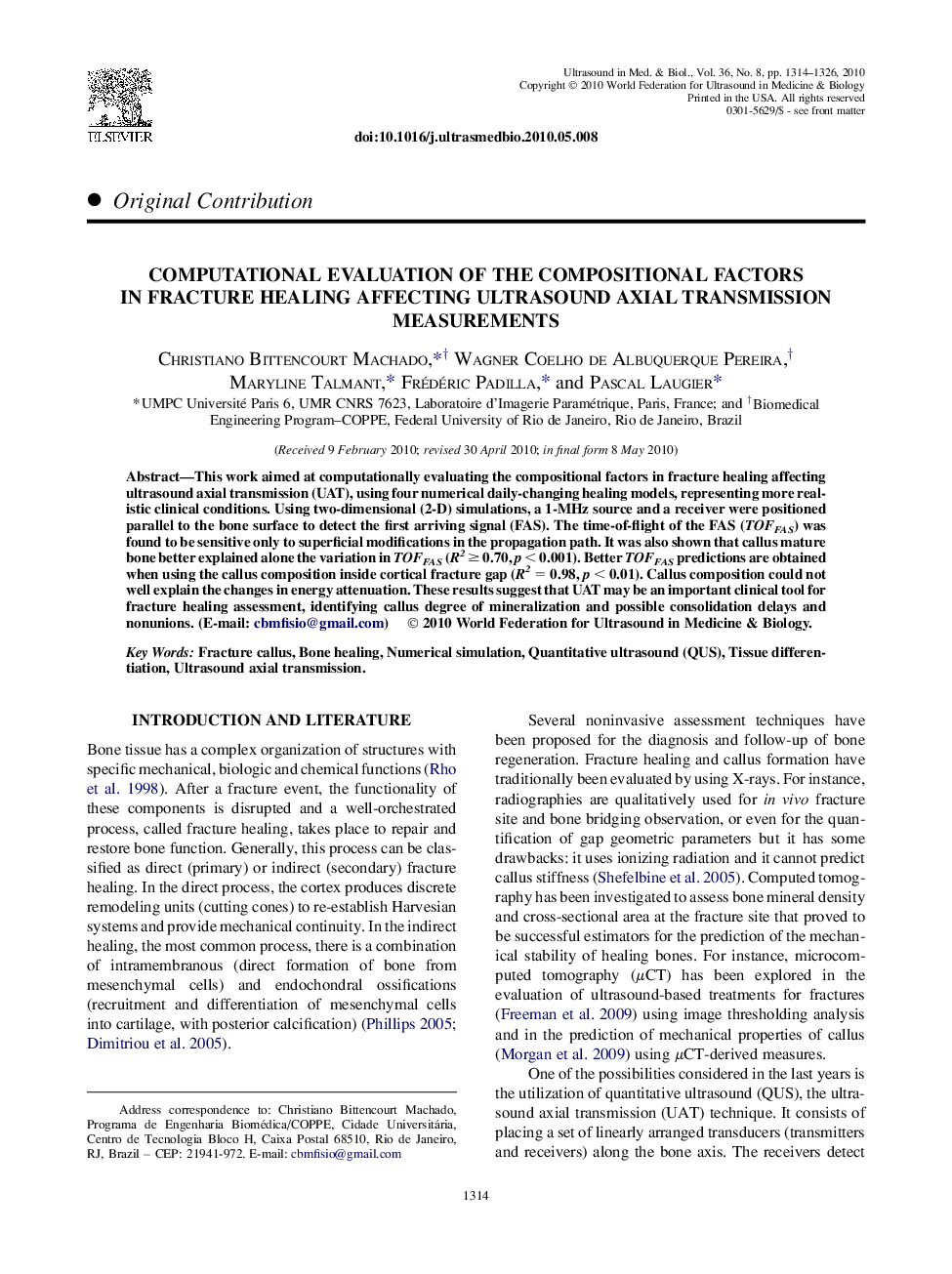| Article ID | Journal | Published Year | Pages | File Type |
|---|---|---|---|---|
| 1761654 | Ultrasound in Medicine & Biology | 2010 | 13 Pages |
Abstract
This work aimed at computationally evaluating the compositional factors in fracture healing affecting ultrasound axial transmission (UAT), using four numerical daily-changing healing models, representing more realistic clinical conditions. Using two-dimensional (2-D) simulations, a 1-MHz source and a receiver were positioned parallel to the bone surface to detect the first arriving signal (FAS). The time-of-flight of the FAS (TOFFAS) was found to be sensitive only to superficial modifications in the propagation path. It was also shown that callus mature bone better explained alone the variation in TOFFAS (R2 ⥠0.70, p < 0.001). Better TOFFAS predictions are obtained when using the callus composition inside cortical fracture gap (R2 = 0.98, p < 0.01). Callus composition could not well explain the changes in energy attenuation. These results suggest that UAT may be an important clinical tool for fracture healing assessment, identifying callus degree of mineralization and possible consolidation delays and nonunions. (E-mail: cbmfisio@gmail.com)
Keywords
Related Topics
Physical Sciences and Engineering
Physics and Astronomy
Acoustics and Ultrasonics
Authors
Christiano Bittencourt Machado, Wagner Coelho de Albuquerque Pereira, Maryline Talmant, Frédéric Padilla, Pascal Laugier,
